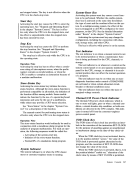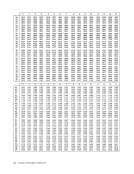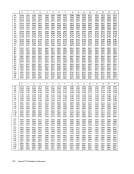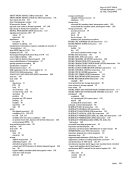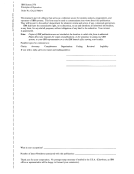CCW contain modifier bits.
Control
Data Address
o 8
A control operation is initiated at the
and the sub channel is set up to transfer data from
main storage to the device. The device interprets the
data as control information. The control informa
tion, if any, is fetched from storage in an ascending
order of addresses, starting with the address speci
fied in the CCW. A control command may be used
to initiate at the
ing transfer of data --such as backspacing or rewind
ing magnetic tape or positioning a disk-access mech
anism.
For many control functions, the entire operation
is specified by the modifier bits in the command
code, and the function is performed over the
the entire control function, the data-address field of
the CCW designates the location containing the
required additional information. This control informa
tion may include an order code further specifying
the operation to be performed or an address, such as
the disk address for the seek function, and is trans
ferred in response to requests by the device.
A control command code containing zeros for the
six modifier bits is defined as a no-operation. The
no-operation order causes the addressed device to
respond with channel end and device end without
causing any action at the device. The order can be
executed as an immediate operation, or the device
can delay the status until after the initial selection
sequence is completed.
initiated by means of the control command depend
on the type of
their codes are specified in the
tion for the device.
A CCW used in a control operation is inspected
for the CD, CC,
ting of the skip flag is ignored. Bit positions 0-5 of
the CCW contain modifier bits.
program cannot use the CCW count field to specify
that no data be transferred to the
operation terminated before data has been trans
ferred causes the incorrect-length indication, provided
the operation is not immediate and has not been
rejected during the initiation sequence. The
incorrect-length indication is suppressed when the
Sense
P
32
A sense operation is initiated at the
the sub channel is set up to transfer data from the
device to main storage. The data is placed in storage
in an ascending order of addresses, starting with the
address specified in the CCW.
Data transferred during a sense operation pro
vides information concerning both unusual condi
tions detected in the last operation and the status of
the device. The status information provided by the
sense command is more detailed than that supplied
by the unit-status byte and may describe reasons for
the unit-check indication. It may also indicate, for
example, if the device is in the not-ready state, if the
tape unit is in the file-protected state, or if magnetic
tape is positioned beyond the end-of-tape mark.
For most devices, the first six bits of the sense
data describe conditions detected during the last
operation. These bits are common to all devices hav
ing this type of information and are designated as
follows:
Bit Designation
1 Intervention requ ired
2 Bus-out check
3 Equipment check
4 Data check
5
Input/
























































































































































































































































